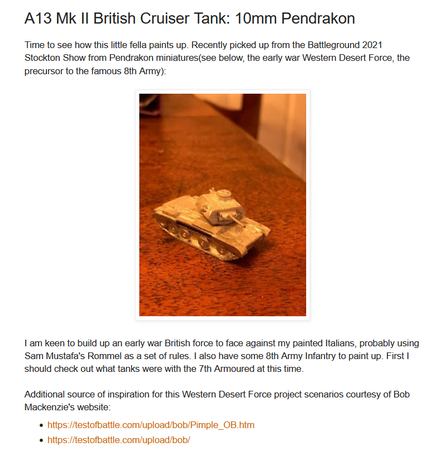I previously wrote about how family connections can spur wargaming interests, and how my Uncle Jasper seems to have served in North Africa with both U.S. infantry and a British commando unit – how can that be?
In this follow-up article, I'm exploring what the available military records tell us about Uncle Jasper's service.
The bad news is that, due to a post-war fire, most U.S. WWII military service records have been lost. As you'll see, what's left is mostly odds and ends.
The good news is that one of our TMP members, Larry Freeman, volunteered to drive up to the National Personnel Records Center, Military Personnel Records (NPRC-MPR) and submit a records request. The response was unusually rapid, and he sent me the results in the mail.
Meanwhile, most of those same records unexpectedly became available online! I was able to access them through ancestry.com, a family history website where I have a membership.
Newspaper Reports
But before we get into the military records, let me catch you up on some things I learned from searching old newspapers. I am also a member at newspapers.com, a service which allows you to search through their collection of historical newspapers.
Here's a rather startling search result for 8 April 1943:

Yes, he was mistakenly reported as dead. The article also confirms that he was in the Iowa National Guard, trained at Camp Claiborne in Louisiana, was sent to England in April 1942, and went to North Africa with the American invasion forces (Operation Torch was November 1942).
Fortunately, according to a follow-up newspaper article two days later, his mother received a second telegram from the War Department, informing her that her son was, instead, "slightly wounded and making normal improvement."
Medical Records
The medical records are available on ancestry.com as text files, while the military documents include both a datasheet and some nicely formatted reports from that data. Basically, we find out that Jasper had three medical events.

We learn that in March 1943, Uncle Jasper received a shrapnel wound to his forearm in the line of duty, resulting in a compound fracture. He lost 124 days of service, returning to duty in July 1943.
This also confirms he was in North Africa, though surprisingly, he's in the cavalry.
The next record tells us that he was back in the hospital the very next month – August 1943. This record says he has a simple fracture of the forearm due to a shell explosion or shell fragment. This is the same injury from March, as it is listed as a readmission. He now has osteomyelitis – an infection of the bone marrow. They perform a curettement (i.e., removal of tissue by scraping with a tool called a curette). He is out for 102 more days, returning to duty in November 1943.
Interesting, he is now listed as 'infantry (or possibly Quartermaster)'.
The final medical entry is for March 1944, and he is still in the North African theater. This time, he has enterocolitis – inflammation of the large and small intestines (causing diarrhea). He returns to duty after an unspecified amount of time.
Discharge Records
The other records that Larry was able to obtain relate to Jasper's honorable discharge in 1945.
First, there is a 3-page Final Payment Roll. The record is not self-explanatory, but we can tell he was processed at Jefferson Barracks in Missouri, receiving a check for $4,199.02 USD and cash in the amount of $1,900 USD. There is a cryptic note about transferring as a corporal. We also see his signature.

The final document we were able to obtain is his Report of Separation/Honorable Discharge document. The bad news is that the original document apparently became wet at some point, and it is blurred and difficult to read.
I can make out his description – brown hair, brown eyes, 5' 10.5" tall, weighing 162 pounds.
Surprisingly, his military occupation specialty is Military Policeman. His military qualification is Sharpshooter, Rifle. His battles and campaigns are listed as Algerian, French Morocco and Tunisia. Decorations and citations include two Bronze Stars and Purple Heart, but I can't decipher the details. Wounded in 1943. Highest grade held: sergeant. I can't decipher the remarks field. His signature is at the bottom.
What We Know So Far
Uncle Jasper served with the National Guard prior to WWII, enlisting as a sergeant in February 1941. We have post-war paperwork (see previous article) where he says he served with (perhaps chronologically) Company D, 168th Infantry, 34th Infantry Division; Marshalls Troop, 1. Commando (British); and Recon Troop, 34th Division. He was wounded in March 1943, when he was classified as Cavalry; when he was readmitted later that year, he was classified as Infantry. His highest rank was sergeant, but he transferred as a corporal before discharge. At discharge, he was listed as military police.
That leaves me with more questions. What do 'military police' do in action? Would he have been military police for the duration, or possibly only at the end of the war? Why would a military policeman have been working with a British commando unit, or classified as cavalry or recon? What was happening in March 1943 that could have caused his shrapnel wound?
The next step is to track down further information on the 34th Infantry and No.1 Commando…








